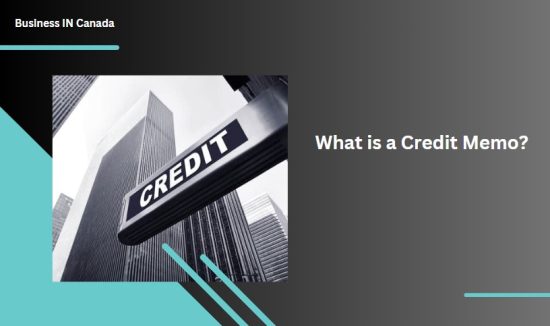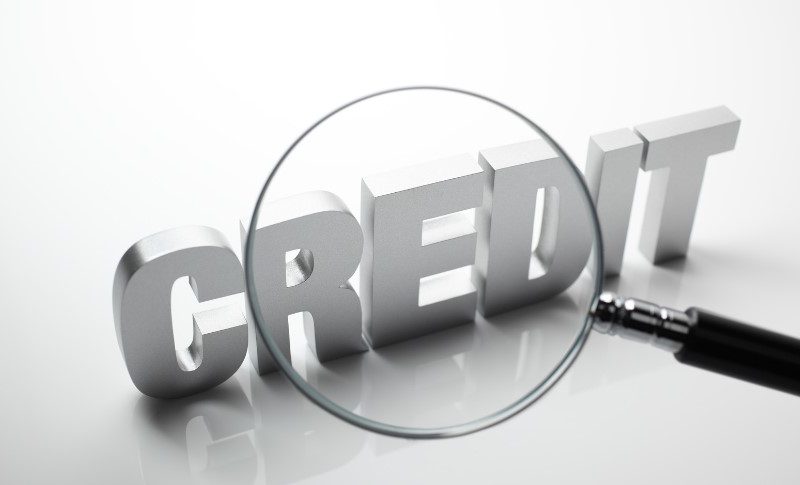Are you familiar with credit memos in Canada? If not, don’t worry – you’re not alone. Credit memos can be confusing and overwhelming for those who are unfamiliar with them. But fear not! In this blog post, we will break down everything you need to know about credit memos in Canada. From what they are and when they are issued to the difference between a credit memo and a refund. So sit tight, grab your favourite beverage, and let’s dive into the world of credit memos together!
What is a Credit Memo?

A credit memo is a financial document that serves as proof of a transaction involving the issuance of credit to a customer. It is essentially a notification from the seller or service provider to the buyer that they owe less than originally invoiced. Credit memos are typically issued when there has been an error in billing, such as overcharging for goods or services. They can also be used to compensate customers for unsatisfactory products or services received.
The information on a credit memo varies but usually includes details such as the date, amount of credit issued, reason for the issue and any associated reference numbers. It’s important to note that while similar in nature, credit memos are not the same thing as refunds. A refund involves returning money back to the customer, whereas a credit memo reduces what they owe.
In essence, receiving a credit memo means you have either been credited some money due to an overcharge or provided compensation for something unsatisfactory – so don’t panic!
Information Included on a Credit Memo
A credit memo is an important document issued to customers due to their overpayment or return of goods and services. It serves as evidence that the customer’s account has been credited with the appropriate amount, which can then be applied toward future purchases.
The information included on a credit memo varies depending on the type of transaction it relates to but generally includes details such as the customer’s name and account number, date of issue, the amount credited, the reason for issuing the credit memo and any other relevant information regarding the original transaction.
For instance, if a customer returns goods due to defects in quality or size issues, details about these reasons must be included in the credit memo. The same applies if either party had an error during invoicing or payment processing.
Additionally, it’s crucial that all necessary corrections are made when issuing a Credit Memo. Any mistakes could lead to confusion between both parties involved in transactions, thus causing more problems instead of resolving them. Proper documentation is essential when creating a Credit Memo because it provides clarity and transparency for both parties involved while avoiding misunderstandings or disputes.
When is a Credit Memo Issued?

A credit memo may be issued in a variety of situations, but it is most commonly used to correct an error or discrepancy on an invoice. For example, if you were overcharged for a product or service, the vendor might issue a credit memo to reduce the amount owed.
Another common reason for issuing a credit memo is when goods are returned. If you return a product that is defective or not as described, the vendor may issue a credit memo instead of refunding your money.
Credit memos can also be issued for other reasons, such as discounts and rebates, billing errors, cancelled orders, etc. In general, any situation where there is an adjustment to an existing invoice could warrant the issuance of a credit memo.
It’s important to note that while a credit memo reduces the amount owed on an invoice, it does not necessarily mean that you will receive cashback. Instead, it acts as a sort of IOU towards future purchases from the vendor.
What is a Debit Memo Charge?
A debit memo charge is a transaction that results in money being taken out of an account. This type of charge can be issued for a variety of reasons, including fees, penalties, or other charges related to financial transactions.
Businesses often use debit memos as a way to collect payments from customers who have outstanding debts. For example, if you owe money on your credit card and fail to make a payment on time, the company may issue a debit memo charge to your account. It’s important to understand that, unlike credit memos which offer refunds or credits towards future purchases, debit memos result in actual charges being deducted from your account balance.
In some cases, you may be able to dispute a debit memo charge if you believe it was issued in error or without proper cause. However, it’s always best practice to carefully review all financial statements and transactions before disputing any charges with your bank or creditor.
Understanding what a debit memo charge is and how it works can help you better manage your finances and avoid unexpected fees or penalties down the line.
What is the Difference Between a Credit Memo and a Debit Memo?

One common source of confusion for many Canadians is understanding the difference between credit and debit memos. While both are types of accounting documents, they serve very different purposes.
In simple terms, a credit memo is issued when there’s an overpayment or incorrect billing on an account. It acts as a form of credit to offset future charges, essentially reducing the amount owed by the customer. On the other hand, a debit memo charge is issued when an underpayment or additional fees need to be charged to an account.
Debit memos can be used for various reasons, such as late payment penalties or unpaid service fees. Unlike credit memos that reduce amounts owed in future transactions, debit memos increase them.
Understanding these differences is essential because they can impact your financial statements and cash flow if not handled correctly. Always review any billing statements carefully and contact your provider if you have any questions about credits or debits related to your account.
Is a Credit Memo a Refund?
When you receive a credit memo, it’s natural to wonder if it’s the same as a refund. While they may seem familiar, the two have some significant differences.
A credit memo is essentially a document that indicates that your account has been credited with a certain amount of money. This can be due to various reasons, such as overpayment or an adjustment made by the issuer. On the other hand, a refund is when you receive back the money you paid for something due to unsatisfactory performance or non-delivery.
So, a credit memo isn’t technically considered a refund since it doesn’t entail direct repayment of funds. However, both serve different purposes and play crucial roles in maintaining financial records accurately.
What is the Difference Between a Credit Memo and a Refund?

When it comes to transactions with businesses, customers might come across the terms “credit memo” and “refund.” While they may seem interchangeable at first glance, they actually have distinct differences.
A business issues a credit memo to its customer as a form of credit toward future purchases. It can be viewed as an IOU or store credit that can be used for future transactions. On the other hand, a refund refers to money being returned back to the customer’s account or in cash due to dissatisfaction with the product or service.
The main difference between these two lies in their purpose. A credit memo is meant to encourage customers to continue doing business with the company while addressing any issues that arose during their previous transactions. In contrast, a refund aims to make things right for dissatisfied customers and ensure they receive their money back.
Another key distinction between these two lies in how they are processed internally within a company’s accounting system. Credit memos are usually credited against accounts receivable, while refunds are debited from sales revenue. Understanding the difference between these terms is essential when dealing with businesses and transactions, as both significantly impact one’s financial records and decisions moving forward.
Why Did I Get a Credit Memo Canada?
If you recently received a credit memo from a Canadian company, it’s natural to wonder why. The good news is that there are many possible reasons for receiving a credit memo, and most of them are positive. Perhaps the company made an error on your invoice and issued the credit memo as a way to correct it. Or maybe you returned merchandise or cancelled services, resulting in a credit being applied to your account.
Another possibility is that you were overcharged for something, and the credit memo is intended to refund the difference. Whatever the specific reason, it’s important to carefully review all information in the document so that you fully understand what has occurred.
While receiving, unexpected paperwork can sometimes cause anxiety or confusion, try not to worry too much about getting a credit memo. In many cases, it simply means that things have been resolved in your favour!
Conclusion
When it comes to credit memos, there are various reasons why they may be issued. It could be due to a mistake on the seller’s part or some discrepancy with the buyer’s account. Regardless of why it was issued, understanding what a credit memo is can help you better manage your finances.
It’s important to note that while a credit memo may indicate that you have received money back from a purchase, it doesn’t necessarily mean that you are entitled to keep those funds. In some cases, the amount credited may need to be reconciled later on with other outstanding balances.
If you receive a credit memo in Canada and are unsure about why it was issued or whether you need to take any action, reach out to the issuer for clarification. They can provide additional information and guide you through any necessary steps. Knowing what a credit memo is can help ensure that your financial records remain accurate and up-to-date.
FAQ – What is Credit Memo in Canada?

Why did my bank send me a credit memo?
So you just received a credit memo from your bank, and you’re not exactly sure why. Don’t worry – there could be numerous reasons for this. It’s possible that the bank made an error in processing one of your transactions and is now issuing a refund to correct the mistake.
Another reason for receiving a credit memo could be due to interest charges or fees being waived on your account. This typically happens as part of a promotion or incentive program offered by the bank. It’s also possible that there was an overpayment on your account, which means that you paid more than what was owed. In such cases, the extra amount will be credited back to your account as per their policy.
If you have any investments with the bank, such as stocks or mutual funds, then dividends earned can also result in credit memos being issued. Regardless of why you received a credit memo from your bank, it’s always important to review it carefully and ensure everything looks correct before taking action.
Do I have to pay a credit memo?
When you receive a credit memo, it means that the company owes you money or has credited your account for some reason. However, whether or not you have to pay the credit memo depends on the circumstances of why it was issued.
If the credit memo is for a refund for something like an overcharge or returned item, then no, you do not have to pay it back. In fact, if anything, the company may owe you more money if their mistake caused any inconvenience or additional fees.
On the other hand, if the credit memo is related to an outstanding balance that needs to be paid off, then yes, eventually, payment will need to be made. The credit memo essentially temporarily reduces what is owed until payment can be made in full. It’s important to carefully review and understand any credit memos received and contact customer service with any questions or concerns regarding payment obligations.
What happens when a credit memo is issued?
When a credit memo is issued, it means that a refund or credit has been given to you by the issuer. This can happen for many reasons, such as overpayment, returned goods, or an adjustment to your account. Once the credit memo has been issued, it will be applied to your account balance. This means that the credit memo amount will be deducted from any outstanding balances owed on your account.
If you have multiple accounts with the same issuer and receive a credit memo on one of them, it may also be applied to other outstanding balances across all of your accounts.
It’s important to note that if you have already paid off your entire balance before receiving a credit memo, this does not mean that the issuer now owes you money. Instead, the credited amount can either be refunded back to you or left as a credit towards future purchases or payments.
When a credit memo is issued, it typically results in some financial benefit for you, whether through lower overall balances owed or direct refunds back into your wallet.
Can you reverse a credit memo?
A credit memo is an important financial tool that can be used to make adjustments to customer accounts and ensure accuracy in billing. It is issued when there is a need for a refund or compensation due to an overpayment or error in the billing process.
It is essential to understand the information included in a credit memo and how it differs from debit memos and refunds. Moreover, knowing when you can expect one and why your bank may send you one is crucial. If there has been an error with your credit memo, you may wonder if it’s possible to reverse it.
Yes! If there was an error made during the issuance of the credit memo, it could be reversed by contacting your creditor or service provider. Being knowledgeable about this financial instrument will help you avoid confusion and ensure accurate accounting practices.










